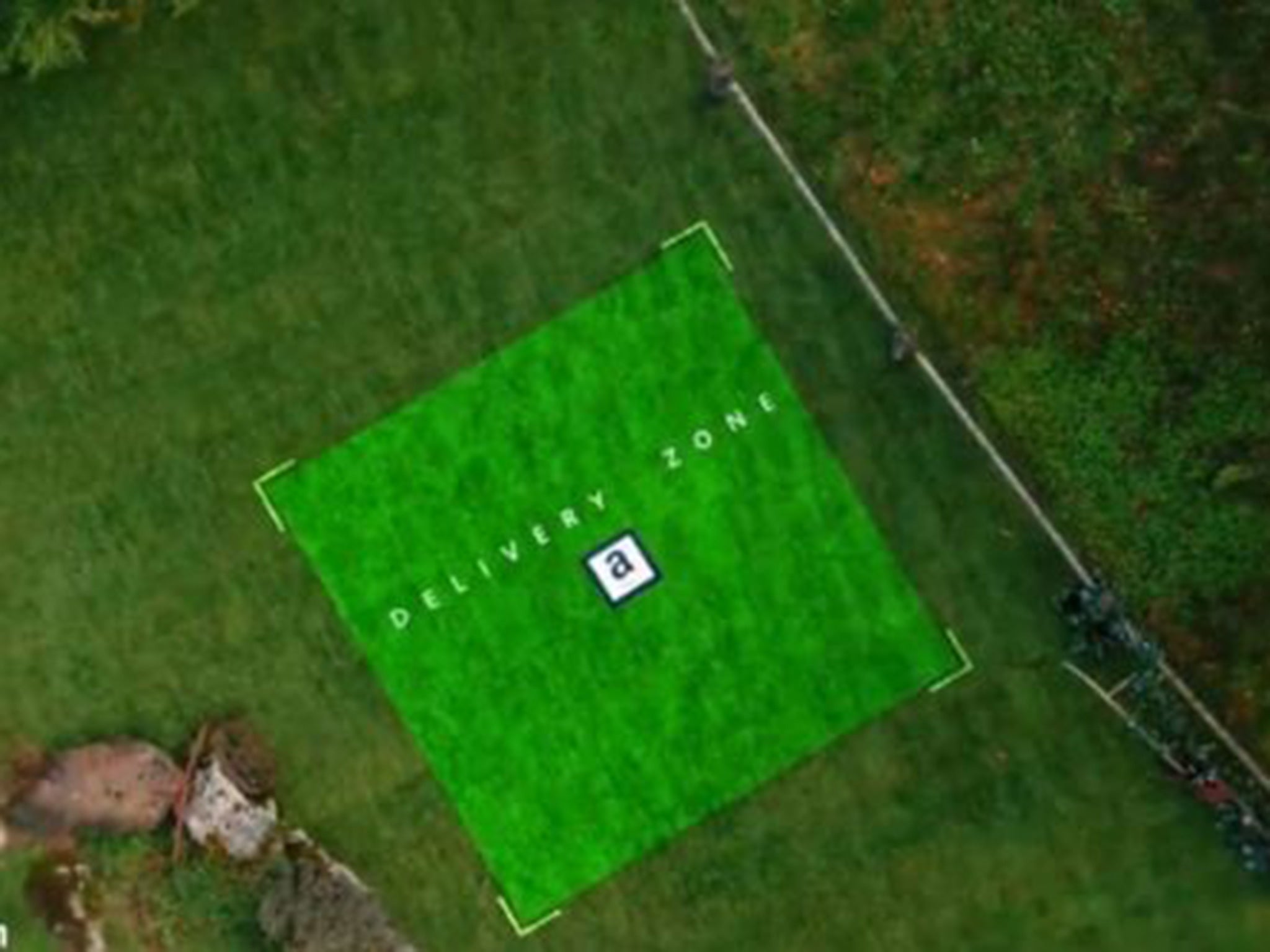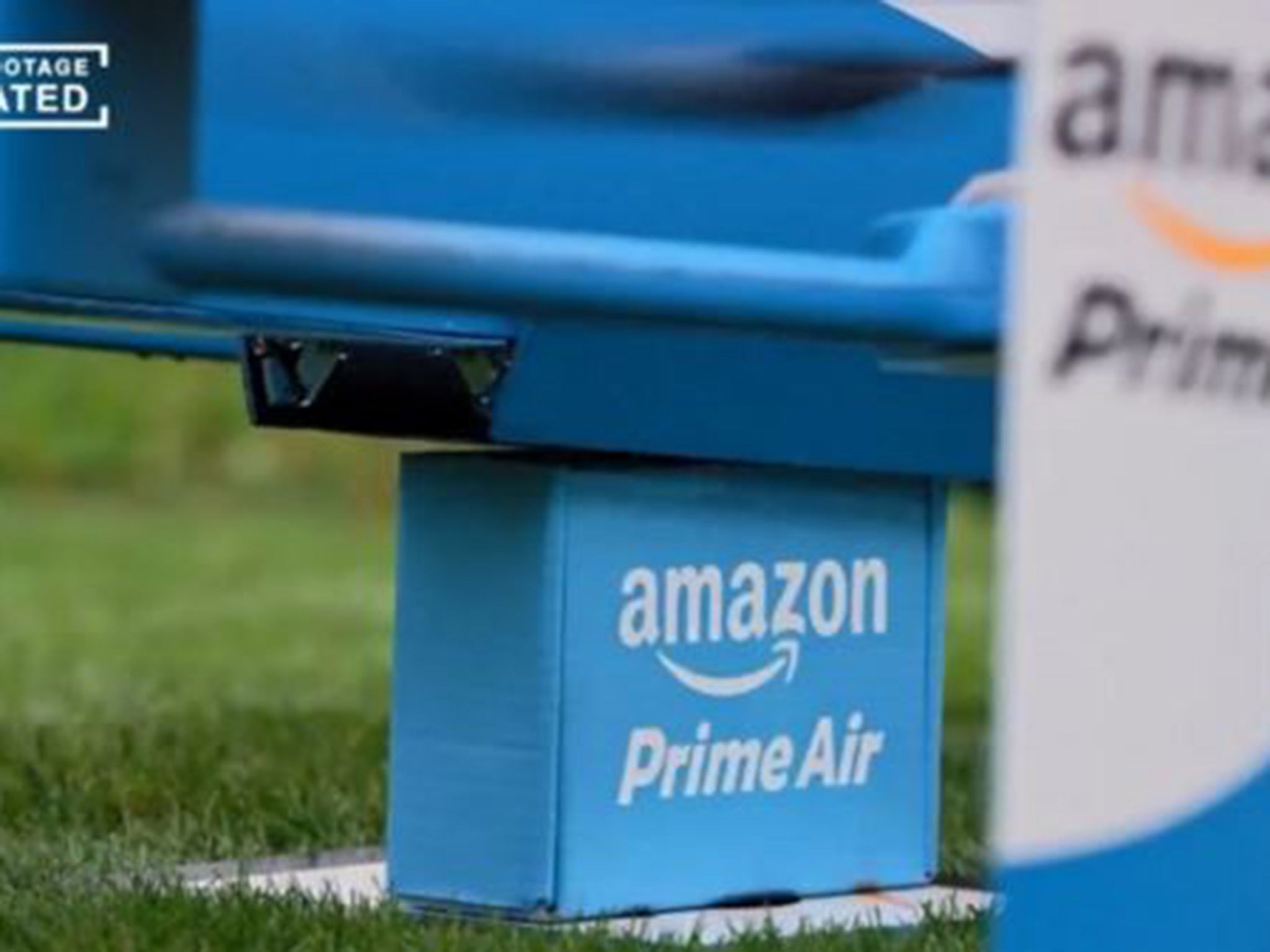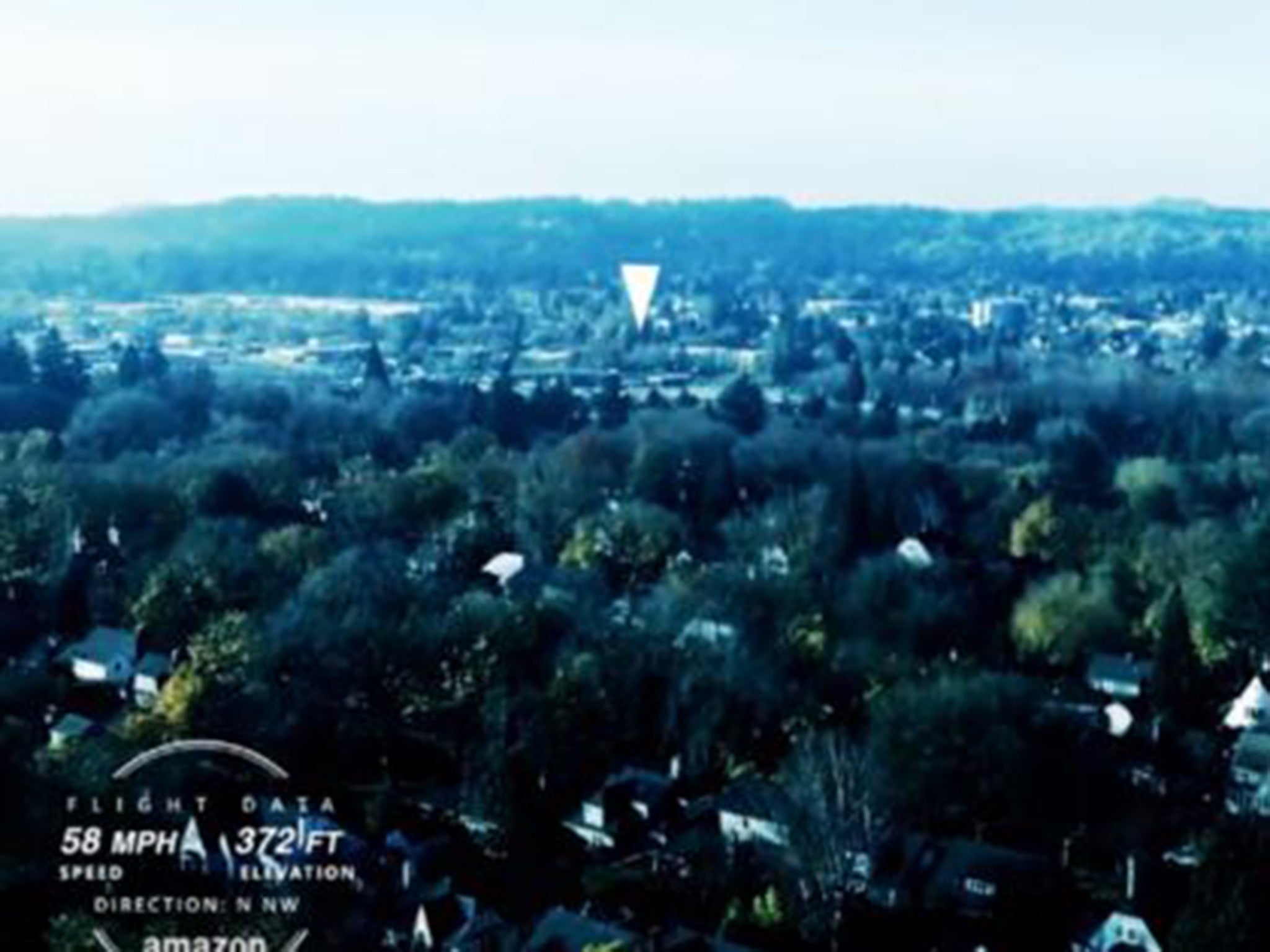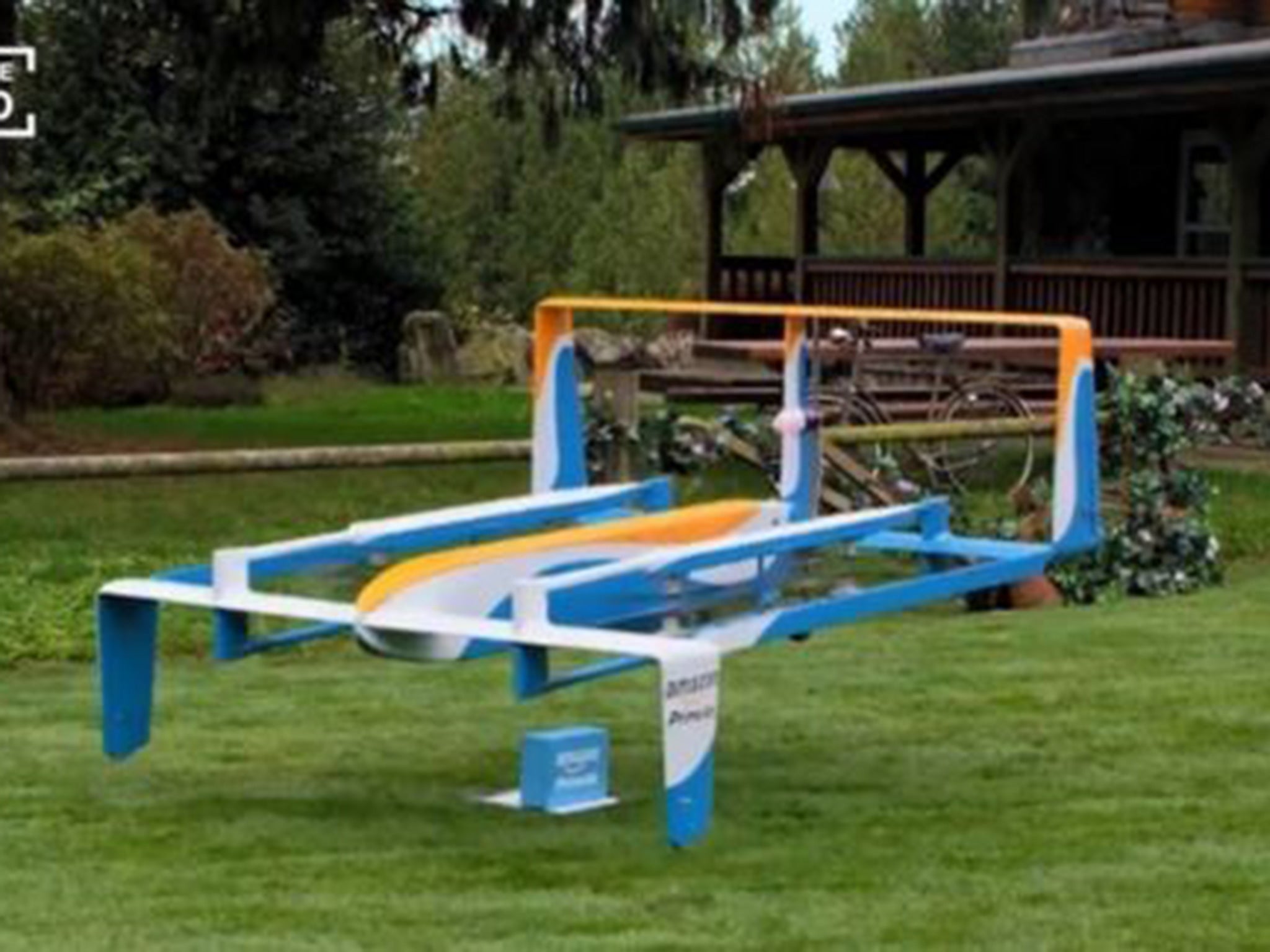Amazon releases video of new 'octocopter' delivery drone prototype
Its eight propellers enable it to take off and land vertically

Almost exactly two years after first announcing its plans to deliver packages with a drone, Amazon revealed a new prototype of one of its delivery drones. Here are some interesting revelations:
1. Amazon built a “hybrid” drone
Amazon’s prototype is an octocopter — meaning it has eight propellers and can take off and land vertically, like a helicopter. But the design also includes wings and a “pusher motor” so that it can transition from helicopter takeoffs to the energy-efficient flight of a plane at altitude. A pure octocopter wouldn’t be capable of a range of 15 miles, like this prototype.
At altitude, only the pusher motor — the large propeller in the back of the drone — is in motion. The eight other propellers reactivate once the drone is about to land and needs to make a vertical descent into a yard.

2. Backyards will be key for Amazon Prime Air
The video shows the drone switching into “landing mode” and descending onto a “delivery zone” in the customer’s backyard. The drone releases the package onto what looks like a sheet of plastic with an Amazon logo. The larger the yard and the less tree cover, the easier the landing will be.

3. Amazon sticks with a different approach than Google
Just like its first drone video, the Amazon drone lands to drop off a package. This is a different tactic than what rival Google has demonstrated, in which its hovering drone releases a package that floats to the ground.
Amazon will need to be certain its drone can land in a backyard without any mishaps involving a family pet, kids, stray sports equipment, a new birdbath or whatever else might be in a yard.

4. What about safety?
Amazon says its drone has “sophisticated ‘sense and avoid’ technology,” which will be essential for those backyard landings. Everyone from big tech companies such as Amazon to start-ups is developing this technology, so that drones can identify obstacles and automatically avoid them. For example, with sense and avoid, a drone would realize a dog had strayed into its landing zone, and not land until the coast was clear.
Because this prototype has nine propellers it will still function even if multiple motors fail.
5. It’ll likely be a lot faster than your local delivery truck
One section of the video, which Amazon notes is actual flight footage, shows the drone flying between 55-58 mph. That speed will come in handy if Amazon is going to deliver on its promise of getting packages to customers in 30 minutes.

6. It’s a big drone
Amazon isn’t saying how much this prototype weighs, only that its drones weigh less than 55 pounds. And it’s not sharing the prototype’s wingspan. If you look at the photo below and remember that blue box is actually a shoe box, it’s obvious the drone is far larger than the consumer drones we see most frequently, such as the DJI Phantom and Parrot Bebop.
While we don’t know its exact dimensions, it appears much larger than the most common consumer drones. (Amazon)
A larger drone means Amazon can carry larger packages. Larger drones are generally heavier, which increases risk in the event of the crash. At the same time, all that size creates space for the nine propellers — and a drone with nine motors has more back-up propellers that a drone with four propellers, which improves safety.

7. Remember, it’s just a prototype
Don’t expect an exact replica of this drone to eventually land in your backyard. Amazon says it has more than a dozen prototypes in its research and development labs, and that the look of characteristics will continue to evolve. Amazon’s prototype has changed quite a bit in two years, who knows what it’ll look like in 2017.
8. Amazon chose a British broadcaster for voiceover purposes
Former Top Gear host Jeremy Clarkson — who is developing a show for Amazon — does the honours. Amazon has taken its testing overseas given its frustration with the slog toward commercial drone regulation in the United States. Amazon says it will launch Prime Air once it has regulatory support. Don’t be surprised if it launches first outside the United States.
Amazon says the prototype can operate safely “beyond line of sight” to distances of 10 miles or more. That means outside the view of the person responsible for controlling it. However the FAA’s proposed commercial drone rules, released in February, require drones to fly where the drone’s pilot can see it. While U.S. drones may eventually be able to fly out of sight, the process isn’t moving as fast as Amazon would like.
Washington Post
Join our commenting forum
Join thought-provoking conversations, follow other Independent readers and see their replies
0Comments